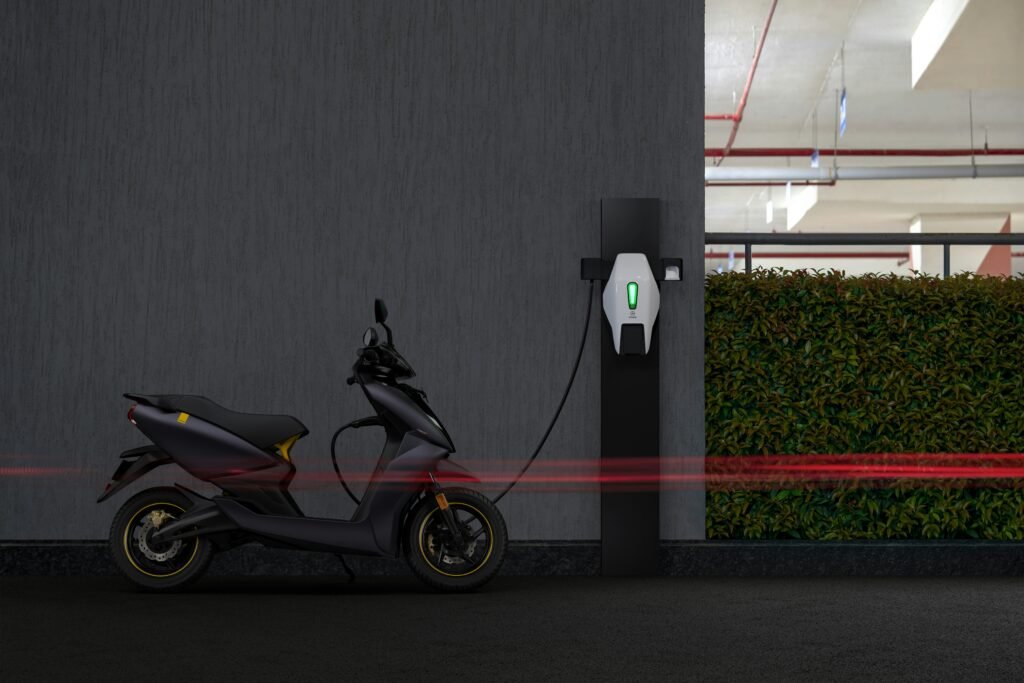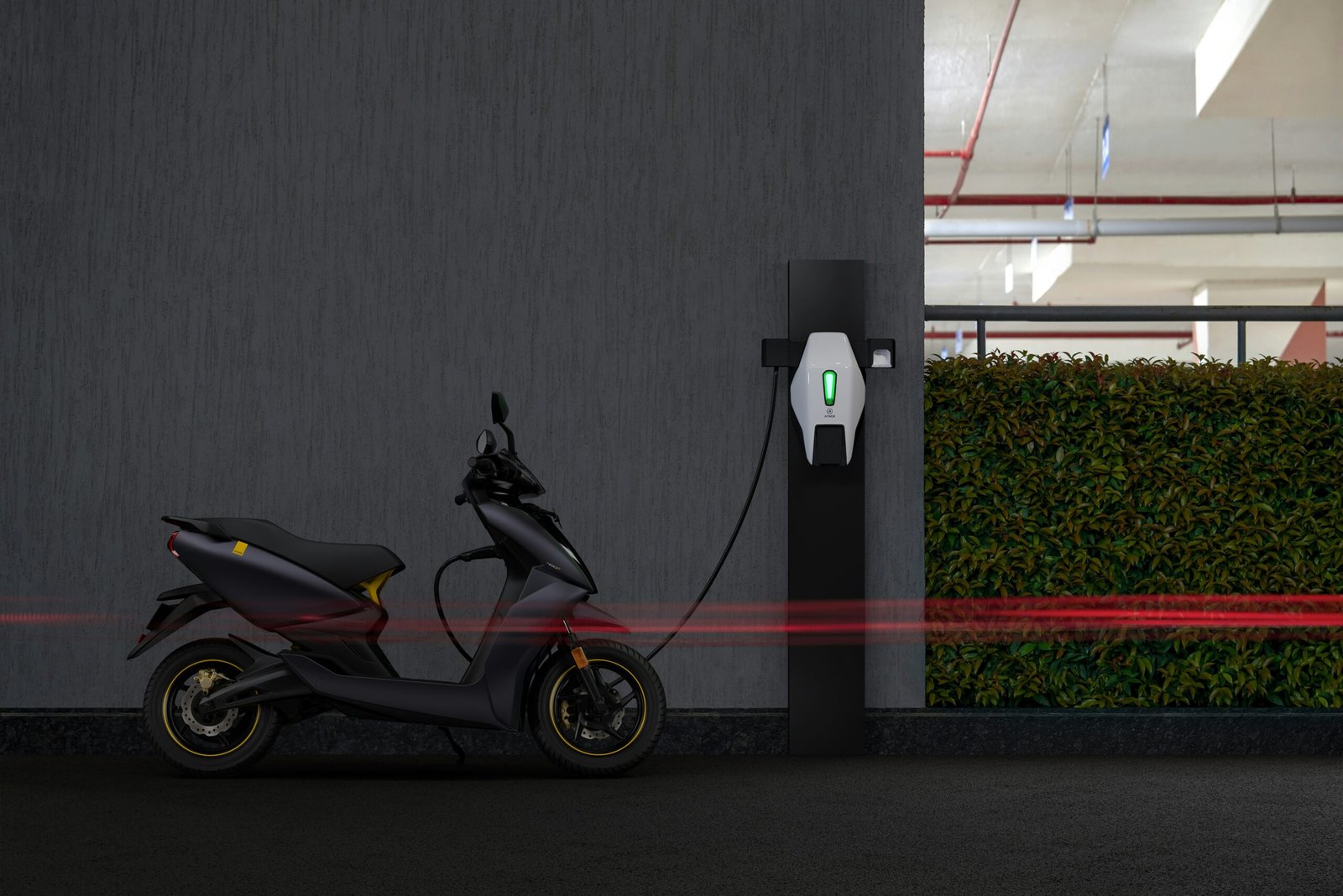Electric vehicles are rapidly gaining popularity as more people recognize their benefits for both the environment and their wallets. However, as the number of electric vehicles on the road increases, the auto salvage industry faces unique challenges in adapting to this evolving market. From handling the high voltage batteries to effectively recycling the specialized components, this article explores the impact of electric vehicles on the auto salvage industry and the strategies salvage yards can employ to keep up with the rise of electric vehicles. Electric vehicles (EVs) have become increasingly popular in recent years, and their rise has had a significant impact on the auto salvage industry. As more and more consumers switch to EVs for their transportation needs, the salvage market has undergone significant changes. This article will explore the impact of electric vehicles on auto salvage and delve into the challenges and opportunities that auto salvage yards face in adapting to this new trend.

This image is property of images.unsplash.com.
Changes in Salvage Market
The introduction of electric vehicles has led to noticeable shifts in the salvage market. With traditional gasoline-powered vehicles, salvage yards primarily focused on salvaging engines, transmissions, and other mechanical components. However, with EVs, the salvage market now includes valuable components such as electric motors, battery packs, and power electronics.
Electric motors, in particular, have become highly sought after in the salvage market as they can be refurbished and resold to repair shops or individual EV owners. These motors are often in excellent condition and can be a profitable asset for salvage yards. Additionally, salvage yards can now salvage valuable battery packs, which can be repurposed for energy storage systems or recycled for their valuable materials.
Challenges for Auto Salvage Yards
While the rise of electric vehicles presents new opportunities for auto salvage yards, it also comes with its fair share of challenges. One of the main challenges is the lack of knowledge and expertise in handling and dismantling electric vehicle components. Unlike traditional vehicles, EVs require specialized training and equipment due to the presence of high-voltage systems.
To overcome this challenge, auto salvage yards must invest in training programs for their employees and equip them with the necessary safety gear. This includes educating employees on how to safely handle and dismantle electric vehicle components, as well as providing them with the proper tools for the job. By investing in training and equipment, auto salvage yards can ensure the safety of their employees and effectively salvage electric vehicles.
Opportunities for Auto Salvage Yards
Despite the challenges posed by electric vehicles, there are also ample opportunities for auto salvage yards to thrive in this new landscape. One of the key opportunities is developing partnerships with electric vehicle manufacturers. As EVs become more prevalent, manufacturers are increasingly interested in establishing recycling programs to manage end-of-life vehicles. Auto salvage yards can capitalize on this by partnering with manufacturers to become their preferred recycling partners.
By developing partnerships with electric vehicle manufacturers, salvage yards can access a steady stream of electric vehicles for salvage, ensuring a consistent supply of valuable components. This collaboration also allows salvage yards to stay up-to-date with the latest technological advancements in electric vehicles, further enhancing their expertise in handling and salvaging these vehicles.
Implementing Safety Measures for Handling Electric Vehicle Components
The emergence of electric vehicles has brought about the need for specific safety measures when handling their components. Auto salvage yards must implement safety protocols to protect their employees and prevent accidents related to the high-voltage systems found in EVs. This may include training employees on proper handling techniques, using insulated tools, and implementing lockout/tagout procedures.
Furthermore, salvage yards should invest in the necessary equipment, such as personal protective equipment (PPE) like insulated gloves and safety barriers, to create a safe working environment. By prioritizing safety and adhering to best practices, auto salvage yards can mitigate the risks associated with handling electric vehicle components.
Proper Disposal of Lithium-ion Batteries
One of the most critical environmental considerations when salvaging electric vehicles is the proper disposal of lithium-ion batteries. Lithium-ion batteries are the heart of electric vehicles, providing the power necessary for propulsion. However, they can pose significant environmental risks if not handled and disposed of correctly.
Auto salvage yards must establish protocols for the safe disposal of lithium-ion batteries, ensuring they are not released into the environment or improperly stored. This can involve partnering with recycling facilities that specialize in processing lithium-ion batteries or implementing on-site storage solutions that meet regulatory requirements.
Recycling Electric Vehicle Components
In addition to properly disposing of lithium-ion batteries, auto salvage yards should also focus on recycling other electric vehicle components. Many components found in EVs, such as electric motors, power electronics, and wiring harnesses, can be recycled for their valuable materials.
By implementing recycling programs, salvage yards can extract precious metals and other recyclable materials from salvaged electric vehicle components. These materials can then be sold to manufacturers who can reuse them in the production of new electric vehicles or other products. Recycling electric vehicle components not only helps salvage yards maximize the value of their inventory but also contributes to a more sustainable circular economy.
Implementing Sustainable Practices
As the world increasingly moves towards sustainable transportation, auto salvage yards have an opportunity to play a vital role in promoting sustainability within the industry. By adopting and implementing sustainable practices, salvage yards can position themselves as leaders in the electric vehicle salvage market.
Sustainable practices may include using renewable energy sources to power salvage yard operations, implementing water conservation measures, and reducing waste generation through recycling and reusing components. Additionally, salvage yards can explore the use of alternative transportation fuel options, such as converting salvage yard vehicles to run on electricity or other clean fuels.

This image is property of images.unsplash.com.
Identifying Marketable Components
To maximize the value of salvaged electric vehicles, auto salvage yards must have a keen eye for identifying marketable components. While some components, like electric motors and battery packs, are highly sought after in the salvage market, others may have limited demand.
By understanding the market and staying up-to-date with emerging trends, salvage yards can effectively identify components that have resale value. This includes keeping track of demand for specific electric vehicle models and understanding which components are frequently needed by repair shops, individual EV owners, or other industries.
Considering Repair and Resale Opportunities
In addition to selling individual components, auto salvage yards can explore repair and resale opportunities for salvaged electric vehicles. While some vehicles may be beyond repair, salvage yards should assess the potential for refurbishing and reselling electric vehicles that have minor damage or issues.
By partnering with experienced mechanics or repair shops, salvage yards can extend the life of salvaged electric vehicles and cater to customers who are looking for more affordable options. This not only generates additional revenue for salvage yards but also contributes to the overall sustainability of the electric vehicle industry.
Exploring Second-Life Applications
Innovation within the electric vehicle industry has paved the way for creative second-life applications of salvaged components. Auto salvage yards can explore partnerships with companies or entrepreneurs interested in repurposing salvaged electric vehicle components for new uses.
For example, battery packs can be repurposed for energy storage systems, providing a valuable source of sustainable backup power. Electric vehicle motors can find new life in other applications, such as industrial equipment or marine vehicles. By actively seeking out these second-life applications, salvage yards can expand their revenue streams and contribute to a circular economy.
Evaluating Space Requirements
The rise of electric vehicles may require auto salvage yards to reevaluate their space requirements. Due to the unique characteristics of electric vehicle components, salvage yards must ensure they have adequate space to safely handle, store, and dismantle these components.
Auto salvage yards should assess their current infrastructure and make any necessary adjustments to accommodate the larger size and weight of electric vehicle components. This may include expanding storage areas, adjusting shelving or racking systems, or even investing in additional property to accommodate the influx of electric vehicles.
Implementing Efficient Storage Systems
To manage the increasing number of electric vehicles entering the salvage market, auto salvage yards must implement efficient storage systems. This ensures that salvaged components are organized, easily accessible, and protected from damage.
Salvage yards can optimize their space by utilizing vertical storage solutions, such as racks or shelving, to maximize the use of available space. Additionally, implementing proper labeling and tracking systems will streamline inventory management and reduce the time spent searching for specific components.
Tracking and Management Software
To effectively manage the growing inventory of electric vehicles and components, auto salvage yards should consider implementing tracking and management software. This software can help streamline operations, improve inventory accuracy, and facilitate effective communication among employees.
Tracking and management software can provide real-time information on the availability of specific components, streamline the ordering process, and generate reports to analyze sales and inventory trends. By utilizing such software, salvage yards can improve efficiency, reduce errors, and ultimately enhance their overall operations.
Understanding Regulations for Electric Vehicle Recycling
As the popularity of electric vehicles continues to rise, regulatory bodies are implementing specific regulations for the recycling of electric vehicles. Auto salvage yards must stay well-informed on these regulations to ensure compliance and avoid penalties.
While regulations may vary depending on the region and country, they typically cover the proper handling, storage, and disposal of electric vehicle components. Salvage yards should familiarize themselves with these regulations and establish protocols that align with the requirements specified by regulatory authorities.

This image is property of images.unsplash.com.
Complying with Safety Standards for Handling Electric Vehicle Components
In addition to regulatory requirements, salvage yards must comply with safety standards for handling electric vehicle components. These safety standards are in place to protect employees and prevent accidents related to the unique hazards associated with electric vehicles.
Auto salvage yards should refer to industry guidelines and standards, such as those established by the Occupational Safety and Health Administration (OSHA), to ensure they are implementing best practices for handling electric vehicle components. This may include providing proper training, using the appropriate personal protective equipment (PPE), and establishing standard operating procedures to mitigate risks.
Staying Up-to-Date with Legal Requirements
The landscape of the electric vehicle industry is continuously evolving, and with it, so are the legal requirements. Auto salvage yards must stay up-to-date with the latest legal requirements and adapt their practices accordingly.
This includes understanding any changes in regulations, safety standards, or other legal obligations related to salvaging electric vehicles. By staying informed and proactive, salvage yards can avoid potential legal issues and maintain a competitive advantage in the market.
Assessing Demand for Electric Vehicle Salvage
To thrive in the electric vehicle salvage industry, salvage yards must assess the demand for salvaged electric vehicle components. By understanding market trends and consumer preferences, they can make informed decisions regarding which electric vehicle models to salvage and which components to prioritize.
Salvage yards can monitor industry reports, engage with repair shops or individual customers, and track online platforms to gauge demand for electric vehicle salvage. This information will aid in determining inventory targets, pricing strategies, and overall business planning to maximize profitability.
Monitoring Shifts in the Automotive Industry
Electric vehicle adoption is not the only shift happening in the automotive industry, and salvage yards must stay attuned to other changes that may impact their business. This includes monitoring emerging technologies, shifts in vehicle manufacturing, and advancements in materials.
By staying informed about the broader automotive industry, salvage yards can adapt their salvage strategies to align with market demands. This may involve expanding into other areas, such as salvaging hybrid vehicles or exploring opportunities in emerging sectors like autonomous vehicles.
Analyzing Consumer Preferences
Consumer preferences play a crucial role in the success of salvage yards in the electric vehicle industry. Salvage yards must understand the preferences and needs of their target customers to effectively serve their clientele.
This could involve conducting market research, analyzing customer feedback, and engaging with EV owners and repair shops to gather insights. By aligning their salvage offerings with consumer preferences, salvage yards can attract loyal customers and build a positive reputation in the industry.
Training Employees on Electric Vehicle Components
As electric vehicle salvage becomes more prevalent, it is essential for salvage yard employees to have a deep understanding of electric vehicle components. This includes knowing how to identify, handle, and dismantle these components safely and efficiently.
Auto salvage yards should invest in training programs to ensure their employees are equipped with the knowledge and skills necessary to salvage electric vehicles effectively. This training should cover topics such as recognizing different types of electric vehicle components, understanding the hazards associated with high-voltage systems, and following proper dismantling procedures.
Keeping Up with Technological Advancements
The electric vehicle industry is characterized by rapid technological advancements, and auto salvage yards must keep pace with these changes. Salvage yards should actively seek out information on emerging technologies, new models, and advancements in electric vehicle design.
By staying up-to-date with technological advancements, salvage yards can adapt their processes and expand their capabilities to handle the evolving complexities of electric vehicle salvage. This includes investing in diagnostic tools, software, and other equipment that facilitate efficient salvaging and testing of electric vehicle components.
Extending Knowledge to Customers
Auto salvage yards have an opportunity to position themselves as trusted sources of knowledge and expertise in the electric vehicle salvage industry. By extending their knowledge to customers, salvage yards can establish themselves as go-to resources for individuals and repair shops seeking advice or guidance on electric vehicle components.
Salvage yards can achieve this through various channels, such as online resources, workshops, or partnering with repair shops to offer training sessions on salvaging and repairing electric vehicles. By sharing their expertise, salvage yards can build valuable relationships with customers and foster a sense of trust and transparency.
Providing Exceptional Customer Service
Providing exceptional customer service is paramount for salvage yards looking to build a reputable presence in the electric vehicle salvage industry. This involves going above and beyond to meet customer needs, ensuring timely communication, and addressing any concerns or inquiries promptly.
Salvage yards should prioritize customer satisfaction by offering flexible return policies, providing accurate product descriptions, and assisting customers with finding specific components. By providing exceptional customer service, salvage yards can establish long-term relationships and attract repeat business.
Establishing Trust and Transparency
Trust and transparency are crucial when dealing with salvaged electric vehicle components. Salvage yards must ensure that customers have complete and accurate information about the condition and compatibility of the components they are purchasing.
By thoroughly inspecting and testing salvaged components, salvage yards can provide customers with reliable products that meet their expectations. Additionally, salvage yards should communicate any known issues or defects transparently to build trust with customers.
Leveraging Positive Reviews and Testimonials
Positive reviews and testimonials from satisfied customers can significantly impact the reputation and success of salvage yards in the electric vehicle salvage industry. Salvage yards should actively encourage customers to provide feedback and testimonials to showcase their commitment to quality and customer satisfaction.
By leveraging positive reviews and testimonials, salvage yards can enhance their credibility and attract new customers. This can be accomplished through online platforms, social media engagement, or even featuring customer stories on their website.
Embracing the Future of Auto Salvage
In conclusion, the rise of electric vehicles has brought about significant changes in the auto salvage industry. While presenting unique challenges, such as the need for specialized knowledge and equipment, electric vehicles also offer numerous opportunities for salvage yards to thrive.
By adapting to the rise of electric vehicles and investing in training, equipment, and partnerships with manufacturers, salvage yards can stay ahead of the curve and capitalize on the growing demand for salvaged electric vehicle components. Additionally, salvage yards must prioritize environmental considerations, maximize the value of electric vehicles through proper recycling and resale opportunities, and effectively manage their inventory and storage.
Through adherence to regulations, compliance with safety standards, and an understanding of market trends and consumer preferences, salvage yards can build a reputation as trustworthy and sustainable businesses in the electric vehicle salvage industry. By embracing the future of auto salvage and continuously adapting to new developments, salvage yards can contribute to the growth of sustainable transportation and maximize their potential for success.
